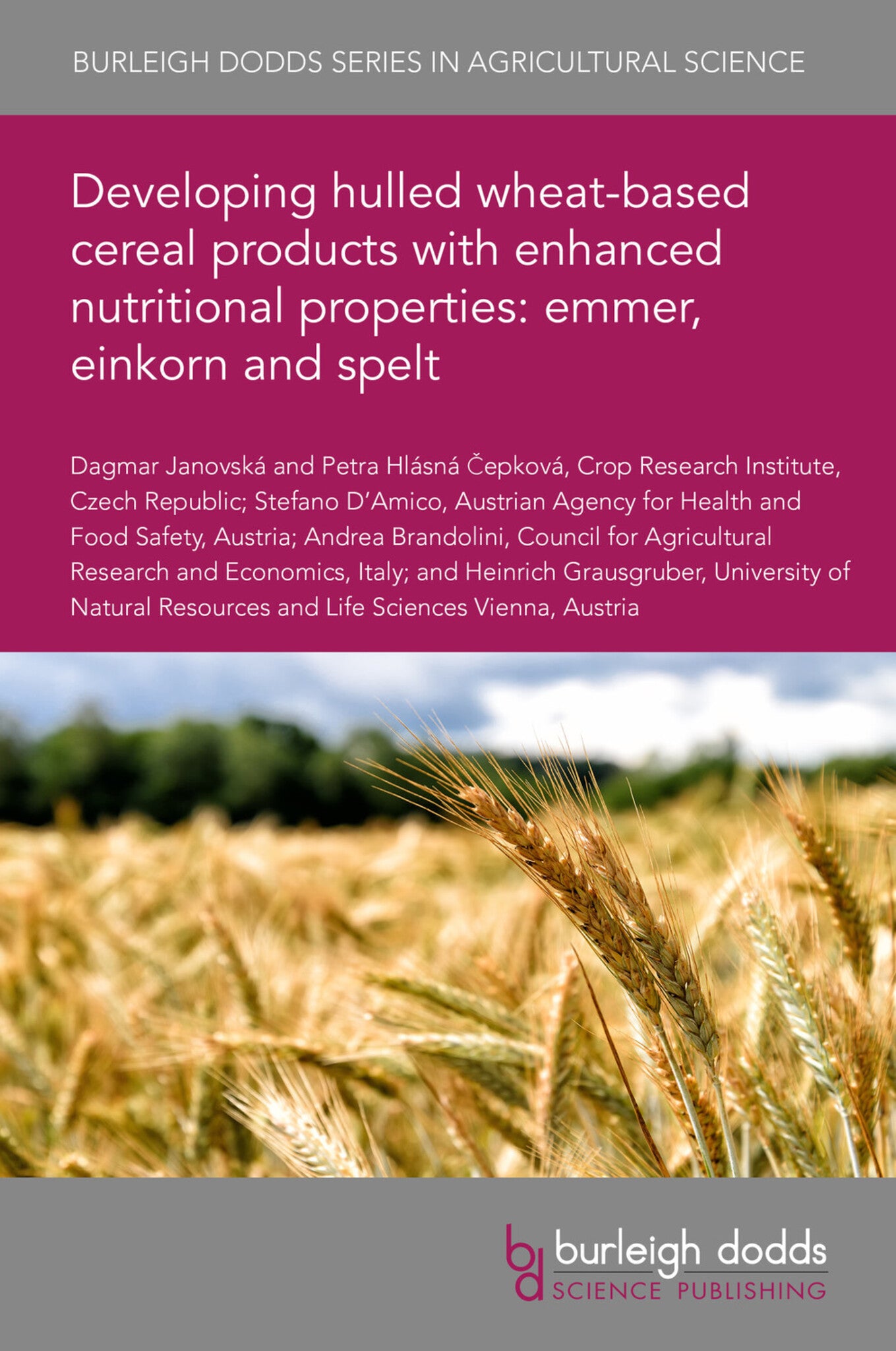We're sorry. An error has occurred
Please cancel or retry.
Developing hulled wheat-based cereal products with enhanced nutritional properties: emmer, einkorn and spelt
Dr dagmar janovská,
Dr petra hlásná čepková,
Dr stefano d’amico,
Dr andrea brandolini,
Dr heinrich grausgruber
Regular price
£25.00
Sale price
£25.00
Regular price
£0.00
Unit price
/
per
Sale
Sold out
Re-stocking soon
Hulled wheats (emmer, einkorn, and spelt) have low yields but are suitable for organic and low-input agriculture under marginal or high-stress conditions. However, data on the composition of hulled...
Read More

Some error occured while loading the Quick View. Please close the Quick View and try reloading the page.
Couldn't load pickup availability
- Format:
-
10 May 2021

Hulled wheats (emmer, einkorn, and spelt) have low yields but are suitable for organic and low-input agriculture under marginal or high-stress conditions. However, data on the composition of hulled wheats, often also called ‘ancient wheats’ is still scarce, especially on bioactive components such as vitamins. This chapter shows that einkorn, emmer and spelt have some nutritional benefits compared to modern durum or common wheat varieties. Hulled wheats have superior properties in constituents such as protein, some minerals (e.g. calcium) and carotenoids (e.g. lutein). Einkorn might be an alternative for people suffering from wheat sensitivities due to improved gliadin digestibility and low abundance of amylase-trypsin inhibitors. A significant disadvantage is the lower content of total dietary fibres. The genetic diversity of hulled wheats can be used for breeding e.g. for Zn biofortification or reducing immunogenic potential.

Price: £25.00
Publisher: Burleigh Dodds Science Publishing
Imprint: Burleigh Dodds Science Publishing
Series: Burleigh Dodds Series in Agricultural Science
Publication Date:
10 May 2021
ISBN: 9781801461566
Format: eBook
BISACs:
TECHNOLOGY & ENGINEERING / Agriculture / Agronomy / Crop Science, Agronomy and crop production, TECHNOLOGY & ENGINEERING / Agriculture / Sustainable Agriculture, Sustainable agriculture, Agricultural science

1 Introduction 2 Protein: content, immunogenic and allergenic proteins 3 Starch 4 Dietary fibre 5 Antioxidants: polyphenols, carotenoids and tocols 6 Micronutrients: vitamins and minerals 7 Case studies: yellow pigments in einkorn 8 Summary and future trends 9 Where to look for further information 10 References



